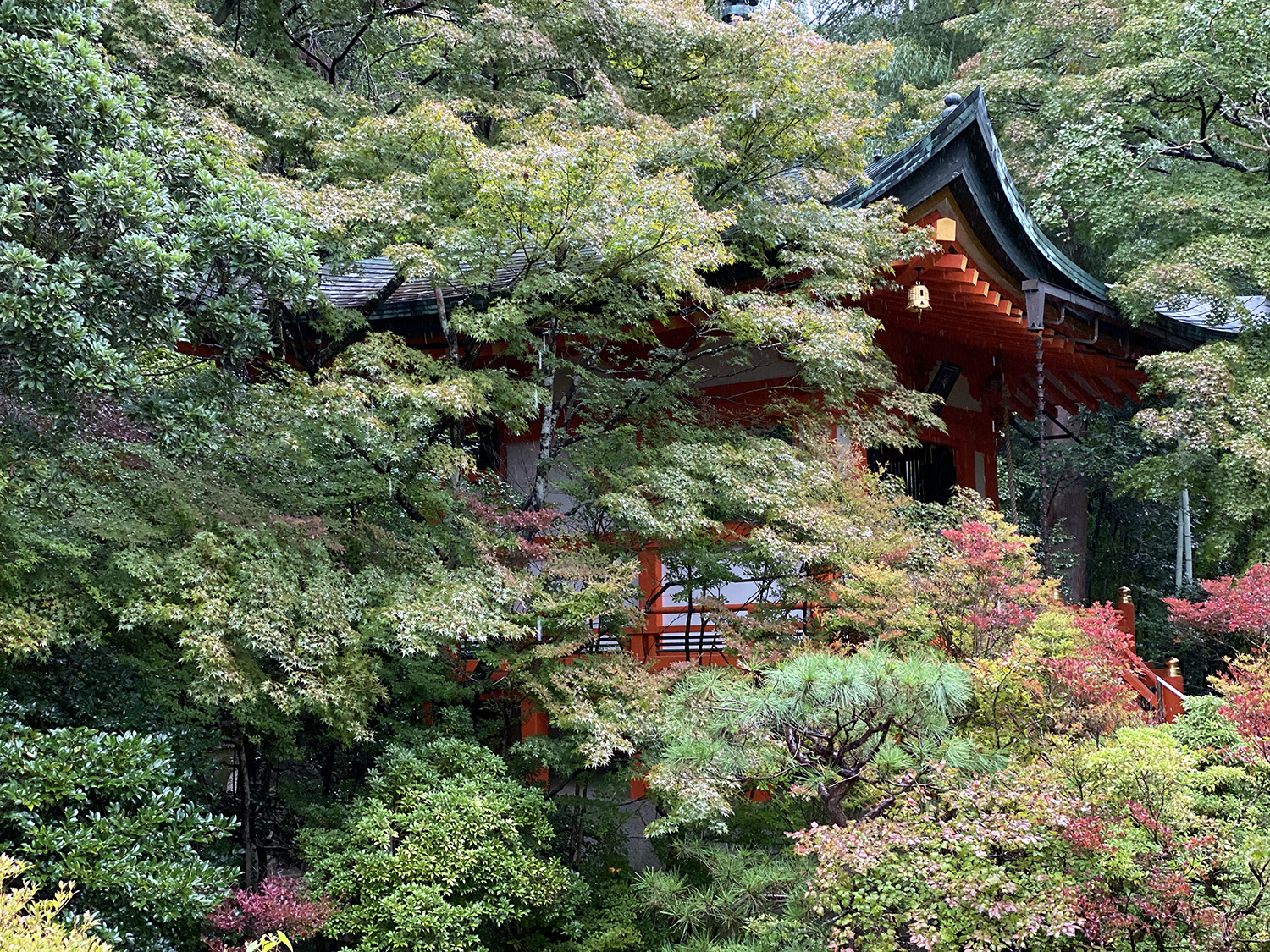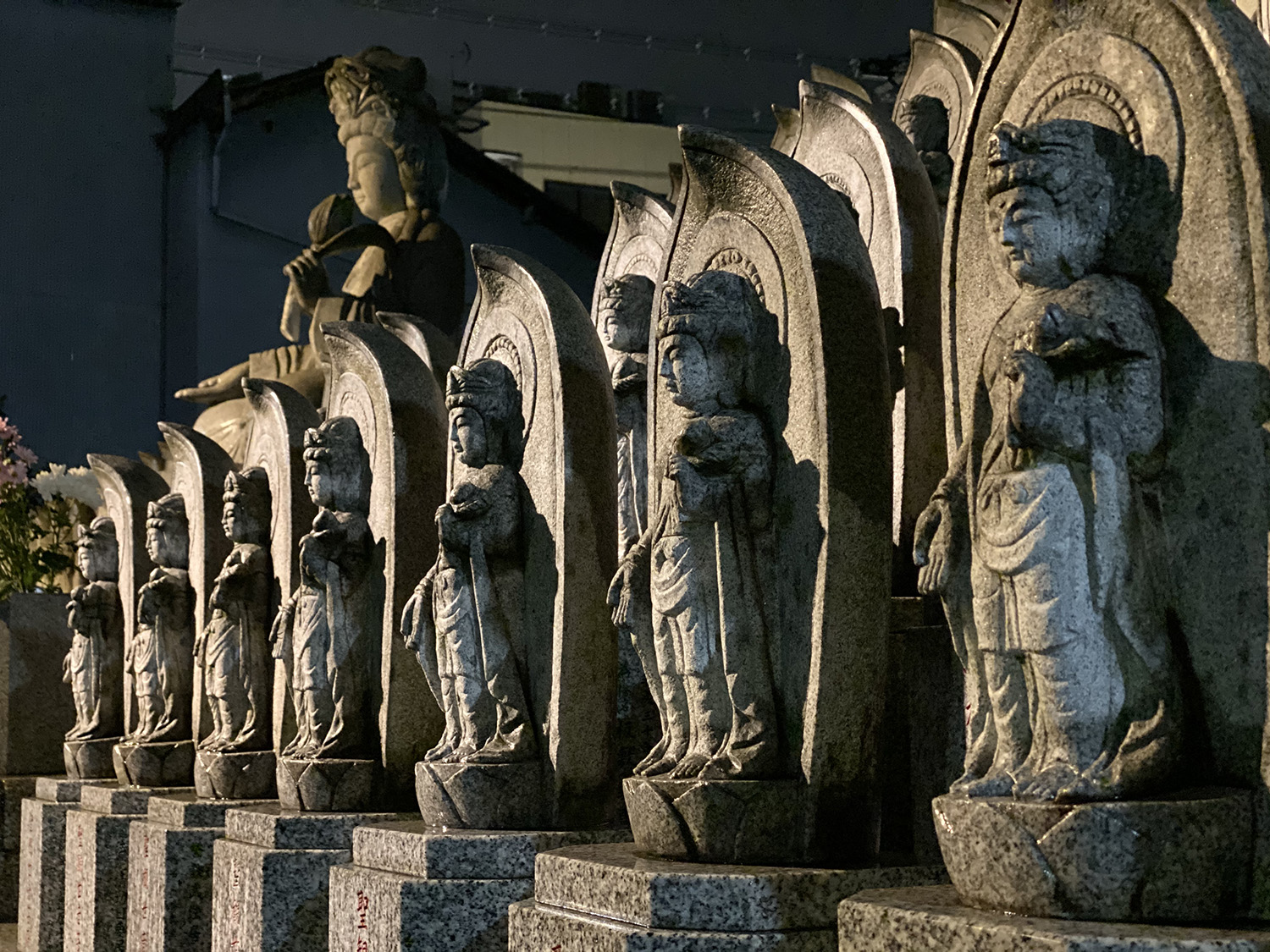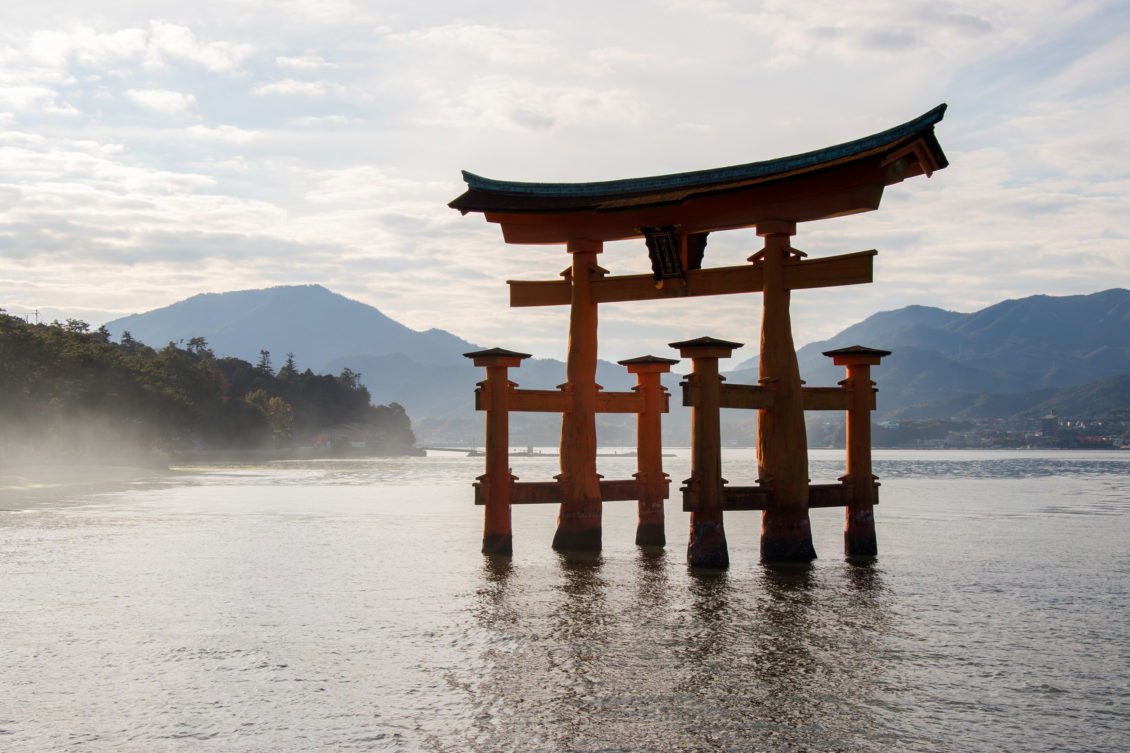
How to work remotely in Japan for 3 months
If there’s a constant in my life, that’s Japan. 90% of the things I like come from that country, and I’m completely in love with their culture, cities, nature, and religion. How would it be living and working there for a while? A question that was always floating around my head but that I never had the chance to figure out. The answer to that question was finally presented to me in 2019 when I decided to take a step forward and move all the necessary threads to spend some time there.
The first question you have to answer is: “for how long I want to stay there?” Depending on your expectations, the process you have to follow may vary, and, in the end, the answer to that question will set the rest of the things you need to organize and plan. Are you going to go with a tourist permit of 90 days, or are you going to apply for a student visa (allowing you to stay longer)? If you apply for a student visa, you might have chances to stay for a minimum of 6 months or more. However, you’re required to have a minimum attendance (around 80-85%) to the classes you’ve enrolled in. The teachers will report periodically to the authorities about your attendance. If, for some unjustified reason (and working remotely for a country that’s not Japan is an unjustified reason) you’re not attending class, they can revoke your visa and send you back home.
Keep this in mind if you’d like to go this way – you need to find a balance between going to classes and working at home/coworking/coffee place. Also, if you work remotely and your tax residency is (obviously) not Japan, make sure you won’t have any problems with the revenue office of your country – in Europe, for example, you can’t work for more than 6 months in a country where you’re not officially living and paying taxes.
In my specific case, I decided to go with a 90 days tourist visa. 3 months are not as exotic as spending 6 or 12, but it was far easier to plan and arrange than with a student visa. Japan allows you to stay a maximum of 180 days per year as a tourist, but it has to be split into “2 rounds”. That means that you can go 90 days, go back to your country (pro tip: you can go to another Asian country like China, Singapore, Taiwan, etc., and spend a couple of weeks in there) and then go back to Japan for another 90 days. The requirements vary per country, but in the case of Spain (and I think in the European Union in general), you can get a 90 days visa without any other requirements than your passport. With the tourist permit, you’re not required to attend any classes, and you’re basically free to-do and to-go anywhere you like, so you can create your own work schedule and manage your time freely.



Once you have very clear the amount of time you’d like to spend in there (let’s assume it’s 90 days, so I can talk from experience), then you have to decide what kind of “life” you’d like to experience. I wanted to divide my time wisely between working and doing some tourism and sightseeing, so I decided to work from Sunday to Thursday and then have Fridays and Saturdays off. I also decided to have a week of vacations in the middle of each month. With that, I could have 3 weeks off distributed in those 3 months, allowing me to travel or visit other cities and places. I usually like to work on Sundays, they’re quieter days in general, and almost all places are closed anyway.
With this in mind, I decided that I wanted to “live” in Kyoto, Osaka and Tokyo. I distributed my stay as follows:
- Kyoto: ~1 month and a half (50 days).
- Osaka: 3 weeks (21 days).
- Tokyo: 2 weeks (14 days).
The reason why I chose Kyoto as my main place to stay was just personal. I don’t like the crowds of Tokyo, and I much more like the people of the Kansai region (more friendly and open). Also, as the former Japanese capital, Kyoto has a lot of the traditional Japanese places I love. Osaka is a very entertaining city, it’s smaller than Tokyo, but it has a lot of crazy vibes I like as well and, most importantly, Osaka is a perfect city to use as a “base of operations” for traveling somewhere else since it’s very well communicated by train. Choosing Tokyo as my last place was mostly because it was more convenient to travel back to Spain and also because I have friends living there. If you never visited Japan before, don’t choose Tokyo as your main place to stay; go somewhere else and give an opportunity to Kansai.
The best time to visit Japan is from October to December – the weather is usually warm in October/mid-November. You can avoid the crowds of Spring and the terribly hot and humid conditions of Summer. You won’t see the pink sakuras, but you can definitely see the red ones of Autumn, which are also wonderful.
Japan Railways Group (JR Group) consists of seven operating companies 1And two other companies that do not provide rail service. that provides rail services to the country. It’s impossible to visit Japan and not see, hear or use any of the services provided by JR. Trains in Japan offer a great and fast service; however, they are costly. Traveling from Tokyo to Kyoto costs around ¥14.0002Around €110 – $130., you have to also add the costs of going from the airport to the station (by metro or taxi) and then from the Kyoto station to the apartment you’ll stay.
Each long-distance travel will cost you a lot of money, so you need to think carefully about how you’d like to plan that according to the days you have reserved for traveling and sightseeing. The key to that relies on 2 things:
Hyperdia is a website where you can check all the timetables and routes of Japanese trains. It’s absurdly and magnificently accurate. You just need to write the place of origin, the destination, the date, and then click on “search”, you will have a list of results with all the available trains, hours, and ticket prices. I wouldn’t have imagined my stay in Japan without Hyperdia. It’s simply a must.
JR Pass is a “happy train hour” service that JR offers for foreigners who want to visit Japan. It’s basically a “master ticket” that gives you free access to all shinkansen, trains, and metro operated by the JR company. They offer three kinds of tickets: 7 days, 14 days and 21 days. Be careful, those days are counted in a row once you validate the ticket in a JR office, so you can’t choose or split them as you like.
So, what I did, in this case, was checking what places I wanted to visit, which days I had “off” or with vacations, and then compare Hyperdia vs. JR Pass to see how I could save more money and get the most out of it. I ended up getting 2 JR Pass, one of them for 7 days and another one for 21 days, and the rest of my trips were just paid individually at the station. Check the conditions carefully at the JR Pass website, one of the most important things is that you need to purchase the pass from your country of origin (as it’s sent via post), and you have 3 months to validate it in Japan – measure your time wisely.
This is a very personal choice, and it really depends on what kind of experience you’d like to have. Do you want to travel alone and share a room with another person? Do you prefer to have a full apartment for yourself? Do you want to have the kind of services that companies like Airbnb offer instead of taking care of the housewifing of a full apartment?
Renting a flat in Japan can be complicated, especially if you can’t speak Japanese; however, some companies like Sakura House offer their services in English. Airbnb is also a good option, but it’s definitely more expensive, especially if you want to stay in a place with at least a separate room with a table you can use to work. The city and the neighborhood you’re picking are also crucial in the price – Kyoto is more expensive than Osaka but cheaper than Tokyo. Tokyo can be super expensive if you stay in Shibuya, but it can be okay if you go for Ikebukuro.
I personally went for Airbnb, but I wouldn’t say this is advisable. I paid a lot of money just to have a little bit more space to work, but I felt it was too much. If I ever repeat this adventure in the future, I most probably won’t go with this option again (unless the prices will drop considerably).
My second advice here is: use it if you have to. I hired the insurance, and I traveled to Japan with my partner. The second day we arrived, she fell down the stairs of Fushimi Inari and she sprained her ankle. Even though we had insurance, we didn’t visit any hospital because we were scared that nobody would understand us, so we decided to treat the wound ourselves. It went okay, but it could have been something more serious. I regret this decision, so please don’t be afraid and go wherever you have to go. There are websites with information about hospitals and professionals that speak your language in Japan.
Having reliable access to the internet while you’re staying there is vital, especially if you plan to work and/or having team calls with your mates (not even mentioning having Google Translate or Maps). Getting SIM Cards with access to the internet is very popular in Japan (you can even buy them in some vending machines at the airport), but what I did (and what I advise to everyone) is renting a Pocket WiFi.
A Pocket Wi-Fi is basically a small portable router using a SIM card (normally from SoftBank). That SIM card has unlimited access to the internet and an average speed of 100Mbps. You can connect your devices (phone, tablet, laptop, etc.) and then carry it with you anywhere you want – you will have internet as long as the small router has coverage (usually everywhere).
The process to get it is super simple: once you pick the option you want and make the payment, you can let them know if you want them to send the router to your hotel or the airport’s post office. Since I wasn’t staying at a hotel (and they won’t send it to an apartment), I picked the airport’s post office. You don’t need to speak Japanese to claim it; you just need to go to the office, say “Pocket Wi-Fi,” and show your passport and the code they sent you beforehand via email. The person working there will give you the envelope with everything inside. Keep that envelope with you; you will use it to put everything they gave you back and drop it in a postbox or post office the day you’ll be traveling back home (the airports have postboxes, so you don’t have to interact with anybody if you don’t want to).
That little thing covered all my internet needs during those 3 months in there. I could work, have Zoom meetings and do all my sightseeing without any problems.

I arrived, finally. 12 hours by plane + 1 hour to go through customs + 1 hour to get into the train station + 2 hours to go to Kyoto + 30 mins to catch a taxi and arrive at the apartment. When you go through all this, you simply want to die. Go to the closest supermarket or combini (Lawson has amazing chicken nuggets and tunamayos), buy something to eat, and then take it easy. It really depends on your body, but usually, you’re going to be a little screwed for a couple of days due to jetlag. If you can take a couple of days off after your arrival, that would be awesome. I couldn’t, and I survived, so it’s okay, but take them if you have the chance to.
There are a few things to keep in mind regarding working in Japan:
- Their day usually starts at 6am and ends around 4-5pm. Restaurants, Karaokes, and Izakayas are open a little longer at night, but shops usually close at 8pm. Shrines, temples, and museums are closing at 5pm. Schedule your work time according to their lifestyle, or you will end up finishing your work at the same time everything is closing. Keep also in mind that by 5-6pm, the sun is already gone. You can check the official Japanese Business Hours on this website.
- Timezones are a challenge if you’re working for a distributed company. In my team at Automattic, we’re split into 3 different timezones, which are more or less close to each other, so it’s easy to accommodate. However, if you’re in Japan, you suddenly have a difference of 9 hours with your team colleagues. Keep this in mind while scheduling calls and meetings. I was having my team call at 10pm, a little price to pay for the experience of being in there, but it can be a little painful if it’s not planned or agreed with your team beforehand.
- Arrange a working setup making you feel comfortable. Decide if you want to work from your apartment, from a coffee shop, or from a coworking space. I only need a laptop to perform my work, but it’s much more flexible if you can use a second screen. In my case, I was working with my mac + iPad as a second screen (using the Sidecar functionality). If you’re not interested in using an iPad (or you use Windows), the ASUS ZenScreen MB16AC is a good option too. If you like to work from a coworking or coffee shop, consider getting good noise-canceling headphones; there’s also an amazing coffee shop/book and music store in Tokyo, pay a visit once you’re there.


Keep an eye on the food and your health. This might sound super silly and obvious, but I can tell you that it’s super easy to lose balance while you’re staying for so much time in a foreign country. Food in Japan is usually full of salt and fat, as a great variety of their dishes are served deep-fried. Don’t get me wrong, I love Japanese food and, obviously, not everything is fried or with plenty of salt (sashimi, sushi, or onigiris are a good example), but it’s good to keep an eye on what kind of food you’re ordering, especially if you have a tendency to gain weight easily (as I do).
Pay attention to prices; you have no idea who easily your money will fly if you do shopping carelessly. If you don’t understand yens, use a currency converter and check. While doing groceries, always go to a normal supermarket and avoid combinis (Lawson, 7Eleven, etc.). Combinis are excellent for last-minute shopping or buying take-away food if you plan to go somewhere, but don’t do all your daily shopping in there, or you will overpay. If you plan to go to the supermarket and buy some meat or fish, always go in the morning. I made a mistake a few times of going after work (in the afternoon/evening), and the only things you will find would be those who nobody wants.
And finally: if you can’t speak Japanese, don’t worry at all. I can’t speak Japanese, and I survived. All the signs in the stations and airports are both in English and Japanese. Japanese people assume you can’t speak their language, so they will do their best to communicate with you the easiest possible way (by using signs with their hands or by pointing you the prices, etc.). They will even speak to you in English in tourist places and ask some questions (especially in Kansai, where people are very open). So, don’t be afraid and don’t let the language be a problem for you to try.


Stumbled across your story on a Google search. Interesting reading thanks.
Quick question – can you actually legally do this on a tourist visa in Japan? Seems to be mixed info out there. I’m keen to do it and probably only need to add on two weeks of working in any given trip there (maybe twice a year).
I can work remotely, but as I work for a government department in my country, they’re not going to go for anything that’s not legal – even if it’s only a technicality. Interested to hear your thoughts.
Hey Glenn!
So, I can’t say 100% sure how it would work in your case, but technically you can’t legally work in Japan with a tourist visa. When I was living there, I was a contractor, working 100% remotely and for a private non-japanese company (not for a government department as in your case). So in the end, nobody was checking on me to see what I was doing while I was at my laptop (and nobody is going to knock on your door to ask you).
In other words, can you do it? Probably yes. Should you do it? Maybe you should clarify that first with your employer. I’m sure that if you’re just working from the hotel/Airbnb for a few hours per day, nobody will ask you. What you can’t absolutely do is apply for a job there (as a clerk, or in a restaurant, etc.).
Keep also in mind that getting to Japan as a tourist is extremely complicated right now (due to the pandemic), so you may want also to check other visa options and what your possibilities are.